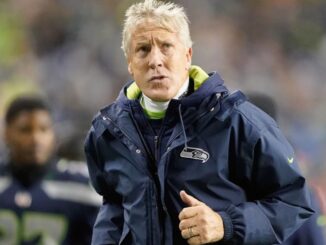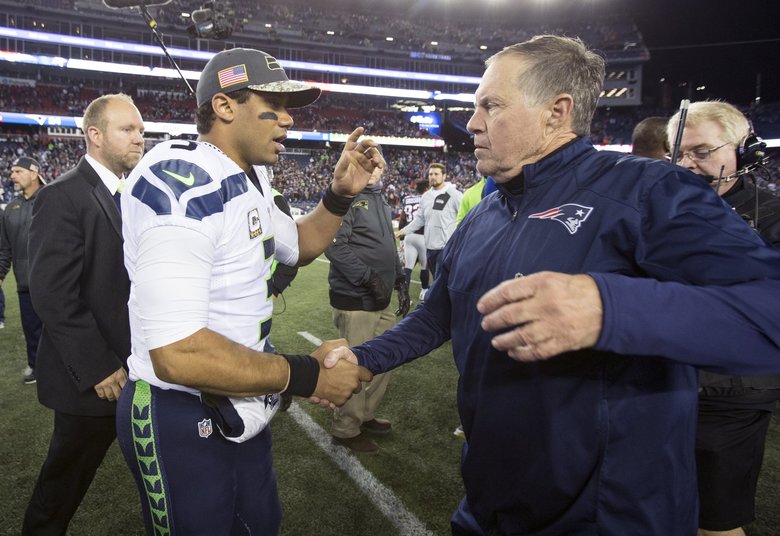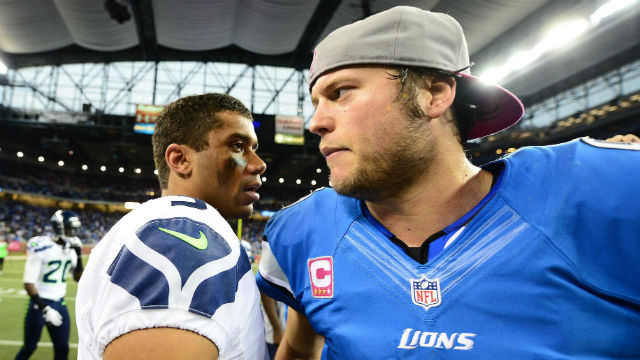
The Seattle Seahawks eked out a 27-24 overtime victory against the San Francisco 49ers on Monday Night Football. The Seahawks survived a 47-yard field-goal attempt by the 49ers that sailed left of the goalposts with 3:10 to go in overtime. It was the second time this season—the first being at home against the Los Angeles Rams—that the ‘Hawks narrowly escaped defeat.
The current 8-2 record could easily be 6-4 and four games behind the 49ers for the NFC West lead, but, as it is, the Seahawks are a single game back of the Niners, holding the tiebreaker.
However, what stands out from the impressive win at San Francisco is the same thing that has stood out all season.
Russell Wilson is really, really special and the offensive scheme is really, really boring and unimaginative.
Head coach Pete Carroll and offensive coordinator Brian Schottenheimer’s commitment to “establishing the run” consistently puts Wilson in 3rd down situations that are sometimes turned into highlight-reel moments for SportsCenter, but all too often just become punts for Michael Dickson. With 45, Dickson has the seventh-most punts in the NFL this season.
In the first quarter of the Monday night game, Seattle possessed the ball on two drives lasting a combined 4:22 for FIVE yards, concluding with two punts. In the second quarter, the Seahawks offense was on the field for three possessions, ending with two punts and a fumble. The only score of the half for Seattle came on the Jadevean Clowney strip and fumble recovery for a touchdown. On the five possessions in the first half, three of the first down-plays were runs and the other two first down-plays were short, quick passes to the flats.
To be fair, the team is running the ball on first down less than last year. In 2018, the Seahawks ran the ball on first down 40.59% of the time, while this season it’s down to 32.30%. That percentage ranks ninth in the NFL. In the 49ers game, Seattle ran the ball 42.11% of the time on first down.
In the second half of the 49ers game, the first two possessions resulted in a fumble and a punt. The touchdown on the third possession was the direct result of an interception by the defense, leaving just 16 yards to score. The play selection? Run. Wilson getting out of trouble on a scramble. Three-yard Wilson TD pass. The 49ers turned the ball over again on the next possession, leaving a 24-yard short field for the offense that took the opportunity to run the ball on both first downs of the drive.
Not to be outdone by Jimmy Garoppolo and the Niners inept offense, Seattle fumbled the ball for a touchdown by the San Francisco defense on its next possession. Punt, field goal, end of the half concluded the Seahawks second half. In the overtime, Wilson threw a rare interception, the 49ers missed a 47-yard field goal, the Seahawks had to punt on the short field, and then finally won the game on the last play of OT with a 42-yard field goal.
So, to recap the Monday night game: The Seahawks scored two offensive touchdowns with a combination of 40 yards to go to the endzone following defensive takeaways and kicked two field goals. Now, the 49ers do have the second most efficient defense in the NFL according to DVOA (defense-adjusted value over average) behind only New England, but the Seahawks’ play calling isn’t doing them any favors.
Here are some statistics to consider. Russell Wilson ranks 3rd in DYAR (defense-adjusted yards above replacement), 5th in DVOA, and 2nd in QBR. With Wilson, the Seahawks rank 2nd in the NFL in passing efficiency, trailing only Patrick Mahomes and the Kansas City Chiefs. Wilson accomplishes these things despite playing behind the 20th ranked offensive line by DVOA and an offensive line that ranks 27th in sacks allowed.
In contrast, the Seahawks rank 13th in rushing efficiency and are actually below average with a -1.3% DVOA. The O-line ranks 20th in adjusted line yards, 15th in power success rate, and 13th in RBs getting “stuffed.” It begs the question, why the commitment to the run when your best offensive weapon is your quarterback, a quarterback who’s scrambling ability – running for his life – actually enhances the rushing statistics?
On Monday night, the Seahawks ran the ball 34 times and attempted 34 passes. The 34 running plays resulted in 147 yards, or 4.3 yards per carry. Sounds pretty good, right? Subtract Wilsons’ 6 “please don’t maim me” runs for 53 yards and the players not wearing number three averaged 3.4 yards per carry. The longest run of the night was 18 yards by Wilson. Running back Chris Carson had the second longest run of the night, a 9-yarder that boosted his average to 3.56 yards per carry. Through the air, Wilson completed 24/34 for just 189 yards. That’s 5.55 yards per attempt. He was sacked 5 times and threw a pick.
The conservative play-calling may have gotten a win in San Francisco and many fans will say “a win is a win.” But this team has a chance to be special because it has a special quarterback. It would be nice to see Carroll and Schottenheimer realize that and open the offense up a little bit.
They have this week to practice before heading to Philadelphia.
We will see.




